Table of Contents
Introduction: Unleashing the Power of Tamiya RC
Tamiya RC has been a staple in the remote control hobby world for decades. The Japanese company started producing its first RC car kit, the Porsche 934, back in 1976. Since then, Tamiya has continued to innovate and push the limits of what’s possible with these miniature machines.
Why is Tamiya RC such a popular choice among hobbyists? For one, their attention to detail is unmatched.
From the design of each individual component to the accuracy of the decals and markings on each body shell, Tamiya puts an incredible amount of effort into making sure their models look just like their full-sized counterparts. But it’s not just about aesthetics.
Tamiya also prioritizes performance and durability. Their models are built to last, with high-quality materials that can withstand even the most intense off-road adventures.
Another reason why Tamiya RC is so beloved by hobbyists is because of its accessibility. Unlike other hobbies that require expensive equipment or specialized knowledge, anyone can get started with Tamiya RC without breaking the bank.
Their entry-level models are affordable and easy to build, making them perfect for beginners who want to dip their toes into this exciting world. Overall, there’s no denying that Tamiya RC has earned its place as one of the most popular choices among remote control enthusiasts worldwide.
In this article, we’ll explore everything you need to know about harnessing the power of these incredible machines – from building your own kit from scratch to mastering advanced driving techniques on challenging terrains. Let’s get started!
Getting Started
The first step to unleashing the power of Tamiya RC is deciding on the right model for you. With so many options available, it can be overwhelming to choose just one.
However, the key is to consider what type of terrain you’ll be driving on and what kind of driving experience you’re looking for. If you plan on primarily driving your Tamiya RC on smooth surfaces such as pavement or indoor tracks, then an on-road model may be best suited for you.
These models typically have low ground clearance and slick tires that are designed for high-speed maneuverability. On the other hand, if you prefer more adventurous off-road driving with rough terrain and obstacles, then an off-road model would be a better choice.
These models have higher ground clearance and larger, rugged tires that can handle uneven surfaces with ease. No matter which type of Tamiya RC model you choose, it’s important to do your research beforehand and ensure that it aligns with your interests and skill level.
Choosing the Right Model
Once you’ve determined whether an on-road or off-road model is best for you, it’s time to start looking at specific models within those categories. It’s essential to consider your budget range because different models come at different price points. Tamiya RC has a wide range of products starting from entry-level kits priced under 100 US dollars; these are a great option if you’re new to the hobby or simply want a budget-friendly starter kit.
For more experienced drivers who want high-end performance and customizability, there are high-end kits available in 200-500 US dollars range. You should also keep in mind the maintenance requirements of each model before making a purchase decision- some models require more maintenance and tuning, while others are easier to handle out of the box.
Understanding Different Types of Tamiya RC models (on-road, off-road etc.)
Tamiya RC offers an extensive range of models across various categories. Some popular categories include touring cars, buggy cars, and monster trucks. Touring cars are designed for on-road driving and are perfect for those who want a high-speed, smooth driving experience.
Buggy cars are also suitable for on-road driving but can navigate off-road terrain with ease – making them a versatile option. Monster trucks are built for off-road adventures; they have large wheels that offer excellent traction in rough terrain and can handle jumps or obstacles with ease.
It’s essential to consider your preferences when choosing the right model category. For example, if you’re looking for a speed-focused experience- touring car models should be your choice; however, if you’re looking for versatility across different terrains- buggy car models would be better suited to your needs.
Necessary Equipment and Tools
Before you embark on building your Tamiya RC model, it is important to gather all the necessary equipment required for building and maintaining your vehicle throughout its lifetime. Some essential tools include screwdrivers (both Phillips-heads & flatheads), pliers (needle-nose & regular), hobby knives or scissors, tweezers (for handling smaller parts), soldering iron/solder kits (if needed), lubricants/ oils/ glues as required by the kit instructions. Additonally investing in a good quality digital multimeter will help in troubleshooting electronic issues that may arise in your model over time
You should also invest in a high-quality battery charger that is compatible with Tamiya batteries. It is recommended to have at least two batteries to effortlessly swap out drained batteries for fresh ones during long driving sessions.
Invest in a good quality set of hexagonal wrenches that will be needed when assembling and disassembling your Tamiya RC model. When you’re starting with Tamiya RC, it’s important to invest in high-quality tools and equipment to ensure that you have all the necessary resources available before embarking on this exciting journey.
Building Your Tamiya RC
Step-by-step guide on building your Tamiya RC kit
Building a Tamiya RC kit can be a challenging but rewarding experience. The first step is to choose the right model for you based on your skill level and preferences. Once you have your kit, it’s important to read the instructions thoroughly and organize all of your materials.
Take your time and don’t rush through any steps. As you begin to assemble your kit, start with the basic structure of the vehicle before moving onto more complex components like the motor and suspension system.
Make sure each piece is secure before moving on to the next step. It’s also important to keep track of which screws and parts go where, as some may look similar but have slight differences.
If you run into any issues during the building process, don’t hesitate to consult online forums or reach out to other hobbyists for help. Many common problems can be solved with simple solutions like adjusting screws or ensuring proper alignment.
Tips on customization and personalization of your build
Once you’ve completed building your Tamiya RC kit, it’s time to make it truly unique by customizing and personalizing it. One option is painting the body shell in a color or design that reflects your personal style. Another option is adding decals or stickers for an extra touch of personality.
Beyond aesthetics, there are also many ways to upgrade performance through customization. Upgrading parts like the motor or battery can improve speed and power, while modifying the suspension system can enhance handling on different terrains.
It’s important to research different customization options before making any modifications, as some may require advanced technical knowledge or could potentially damage other components if done incorrectly. Consult with experts in online forums or hobby shops for advice before making any major changes.
Overall, building and customizing a Tamiya RC kit is a fun and rewarding experience that allows you to create a vehicle that is uniquely yours. Don’t be afraid to get creative and experiment with different customization options to make your Tamiya RC stand out from the rest.
Understanding Your Tamiya RC’s Components
The Motor
The motor is the heart of your Tamiya RC. Without a functioning motor, your car won’t move. Motors come in different sizes and power levels, so it’s important to select one that’s appropriate for your model.
Brushless motors are the most popular because they’re efficient and powerful. However, they can be expensive.
If you’re on a budget, brushed motors are a good alternative. They may not be as powerful or efficient as brushless motors, but they get the job done.
To maintain your motor, keep it clean and free of debris. Dirt and grime can clog up the gears and cause them to wear out faster.
Also, make sure to break in your motor properly before using it for the first time. Common issues with motors include overheating and burnt-out brushes.
If you notice that your motor is getting too hot or that it’s not working at all, check the brushes first. They might need replacing.
The Battery
The battery is another crucial component of your Tamiya RC. Just like the motor, batteries come in different types and sizes depending on how much power you need. One of the most important things to remember about batteries is that they have a limited lifespan.
You’ll eventually need to replace them as they lose their charge over time. To prolong their life as much as possible, make sure you don’t overcharge or undercharge them – this can cause irreversible damage to their cells.
The Suspension System
The suspension system is what allows your Tamiya RC to handle bumps and jumps without breaking apart. There are two main types of suspension systems: independent suspension and solid axle suspension. Independent suspension allows each wheel to move up and down independently from each other while solid axle suspension connects both wheels with a rigid axle.
Generally, independent suspension provides better handling and is preferred by most hobbyists. To keep your suspension system in good condition, make sure to clean it regularly and replace any damaged or worn-out parts.
You should also adjust the suspension to suit the terrain you’re driving on. For example, if you’re driving on a bumpy surface, you’ll want to loosen the suspension to absorb the impact.
Troubleshooting Common Issues
Despite your best efforts, issues can still arise with your Tamiya RC components. One of the easiest things you can do is check all connections and wiring for loose or disconnected parts.
If everything seems secure, try replacing the battery or motor brushes. If you’re still experiencing problems, take a closer look at each component – particularly the motor, battery, and suspension system – to see if there are any visible signs of damage or wear and tear.
If all else fails, consult your instruction manual or online forums for advice from other hobbyists who may have dealt with similar issues. Remember that troubleshooting can be frustrating at times but sticking with it will ultimately pay off in getting your Tamiya RC back up and running smoothly again.
Driving Your Tamiya RC
Tips on Driving Techniques and Strategies
When it comes to driving your Tamiya RC, there are a few tips and strategies that can take your experience to the next level. First, get comfortable with the controls of your model.
Familiarizing yourself with the sensitivity of the throttle and steering will help you avoid overcorrecting or making erratic movements while driving. Another important tip is to watch where you’re going.
It may seem obvious, but it’s easy to get caught up in the excitement of driving and forget about obstacles in your path. Pay attention to both the terrain and any potential hazards, like rocks or tree roots.
Additionally, mastering acceleration and braking techniques can make a significant difference in how much control you have over your Tamiya RC. Learning how to smoothly accelerate and decelerate will help you maintain better control over your vehicle.
Best Practices for Maintenance and Upkeep
Keeping your Tamiya RC in good condition is crucial for both performance and longevity. One of the most important things you can do is maintain a regular cleaning schedule. Dirt, dust, and other debris can clog up moving parts or interfere with electrical components if left unchecked.
It’s also important to regularly inspect your vehicle for wear or damage. Check things like tires, suspension components, or gears for signs of wear or damage that could affect performance or safety.
When it comes to upkeep, one of the best things you can do is invest in high-quality replacement parts when necessary. While it may be tempting to opt for cheaper options, investing in quality parts will not only give you better performance but also save you money on future repairs.
Don’t forget about proper storage practices when not using your Tamiya RC regularly. Keep batteries charged (or at least stored properly), keep dirt from accumulating on your vehicle, and make sure it’s stored in a dry, cool place to avoid damage or corrosion.
Driving your Tamiya RC can be a thrilling experience when done correctly. By mastering driving techniques and following best practices for maintenance and upkeep, you can ensure that your vehicle is always ready to perform at its best.
Advanced Techniques: Taking Your Tamiya RC to the Next Level
Upgrading your motor and battery for increased performance
Now that you’ve built and driven your Tamiya RC, it’s time to take it up a notch. Upgrading your motor and battery is one way to increase your RC’s performance. Many people opt for a brushless motor, which provides more power and speed compared to the stock brushed motor.
You might also consider upgrading to a LiPo (Lithium Polymer) battery, which is lighter than a NiMH battery and has better discharge rates. However, be warned – upgrading these components will come at a cost.
Brushless motors are more expensive than brushed motors, and LiPo batteries can be dangerous if not handled properly. Make sure you do your research before making any upgrades, or consult with someone who has experience in these areas.
Customizing your suspension system for better handling
Another way to improve the performance of your Tamiya RC is by customizing the suspension system. This can be done by changing out shocks, springs, or even adding sway bars. By customizing the suspension system, you can fine-tune the handling of your RC car for different terrains or driving styles.
However, be aware that customizing the suspension system may require some trial-and-error as well as some knowledge of mechanics. It’s important to understand how each component affects overall handling before making any changes.
Advanced driving techniques for more challenging terrains
With improved components and customizations comes an opportunity to tackle more challenging terrains. Steep inclines or rough terrain may require different driving techniques than smooth pavement or flat off-road tracks.
One technique is called “crawling,” where drivers navigate their Tamiya RC over obstacles by slowly inching forward using small bursts of throttle and precise steering. Another technique is “drifting,” which involves intentionally losing traction on the rear wheels to slide around corners.
It’s important to practice these techniques in a safe and controlled environment before attempting them in a more challenging setting. And always remember to prioritize safety over speed or performance.
The Risks of Upgrades
While upgrading your Tamiya RC can be exciting, it’s important to understand the risks involved. Upgrading motors or batteries can be expensive, and customizing suspension systems requires some knowledge of mechanics. Additionally, improper handling of LiPo batteries can be dangerous.
Before making any upgrades or customizations, do your research and consult with someone who has experience in these areas. And always remember to prioritize safety over performance.
Unleashing the full potential of your Tamiya RC requires some skill, knowledge, and investment. Upgrading components such as the motor or battery can improve performance but comes at an added cost.
Customizing the suspension system allows for fine-tuning handling but requires some knowledge of mechanics. And tackling more challenging terrains requires practice and patience.
Remember to prioritize safety over speed or performance when tinkering with your Tamiya RC. With careful consideration and practice, you’ll be able to maximize the power of your model for an even more thrilling ride.
Niche Subtopics
The Tamiya Racing Scene
Sure, building and driving your own Tamiya RC is fun, but have you considered taking things up a notch and joining the Tamiya racing scene? Yes, that’s right, there are organized races for Tamiya RC enthusiasts all over the world. This is where you can really show off your skills and push your Tamiya to its limits.
There are different categories of races for different types of Tamiya models, so make sure you choose the right one for you. But beware, the competition can be fierce.
Custom Painting Your Body Shell
So you’ve built your Tamiya RC and it looks good in its factory colors. But why settle for what everyone else has when you can customize it with a unique paint job?
Painting your body shell is an easy way to make your Tamiya stand out from the rest. And the best part?
You can choose any design or color scheme that suits your personality. Just make sure to use high-quality paint that won’t chip easily.
Insinuating Section
Pushing Your Limits with Tamiya RCs
If you’re someone who always wants more from their hobbies than just casual enjoyment, then look no further than Tamiya RCs. With their endless customization options and various upgrades available in the market, there’s no limit to what you can achieve with these little machines. Whether it’s competing in races or building a truly unique model, there’s always something new to explore with Tamiyas.
Conclusion
If you’re looking for a hobby that combines creativity with technical skill and provides endless hours of entertainment, then look no further than building and driving your ownTtmiaya RC. From the joy of building your own kit to the satisfaction of tearing up the track, there’s something for everyone with these tiny but mighty machines. And with the added benefit of being able to customize and upgrade your Tamiya to your heart’s content, you’ll never run out of ways to push the limits and explore new horizons in this exciting hobby.
So what are you waiting for? Unleash the power of Tamiya RC and see where it takes you!
If you’re looking for a thrilling and challenging hobby that tests your driving skills and patience, Tamiya RC cars might be for you.
Assembling these miniature models can provide hours of fun, especially when you unleash them on the track or gravel road.
This beginner’s guide will explore all there is to know about Tamiya RC cars and how to get started in this exciting hobby.
Introduction To Tamiya RC
 Welcome to the World of Tamiya RC
Welcome to the World of Tamiya RC
Welcome to the exciting world of Tamiya RC, where fun and excitement reign supreme!
In this article series, we’ll explore Tamiya RC in-depth.
Let’s start with an introduction to this thrilling hobby.
What is Tamiya RC?
Tamiya has been a household name in the RC industry for over 40 years, impressing beginners and experts alike.
Essentially, Tamiya refers to any radio-controlled model vehicle produced under the brand name TAMIYA. The company produces R/C cars that delight both kids and adult enthusiasts alike due to their great design.
Why Choose Tamiya RC?
- Tamiya RC cars are known for their high-quality design and attention to detail
- They offer a wide range of models, from beginner to expert level
- Tamiya RC cars are easy to assemble and customize, making them perfect for hobbyists
- The company offers excellent customer support and a vast community of enthusiasts
Whether you’re new to the hobby or looking for a challenge, Tamiya RC has something for everyone.
So why not join the millions of enthusiasts worldwide and experience the thrill of Tamiya RC for yourself?
Tamiya RC cars are easy to assemble and customize, making them perfect for hobbyists.
Understanding The Different Types Of Tamiya RCs
 Choose the Perfect Tamiya RC Car for Your Needs
Choose the Perfect Tamiya RC Car for Your Needs
Tamiya RC cars offer a wide range of options, each with unique features suitable for specific scenarios or preferences.
It’s crucial to understand the differences before choosing.
Types of Tamiya RC Cars
- On-Road: Designed for smooth roads and tracks like parking lots, driveways, and indoor spaces.
- Off-Road: Can handle rough terrains such as dirt paths and rocky surfaces with ease.
- Rock Crawlers: Excel in maneuvering through obstacles.
- Drifters: Prioritize high-speed sideways-driving capabilities.
- Rally Cars: Combine the best attributes from all other models – perfect balance between speed control, stability, and agility.
Remember, each type has its own strengths and weaknesses.
Choose the one that best suits your needs.
Whether you’re looking for speed, agility, or obstacle maneuverability, there’s a Tamiya RC car for you.
Take the time to research and choose the perfect one for your needs.
Investing in the right Tamiya RC car will provide you with hours of fun and excitement.
Setting Up Your Workspace For Tamiya RC Building
 Creating an Efficient Workspace for Building Tamiya RC Kits
Creating an Efficient Workspace for Building Tamiya RC Kits
Building Tamiya RC kits requires a well-organized and dedicated workspace.
To ensure that your project is a success, it is important to set up an efficient work area before starting your first project.
Choose a Spacious Location
- Choose a spacious location for yourself and supplies
- Avoid cramped or cluttered spaces where tools may go missing or small parts could be lost
- A desk or table works best
- If space is limited, consider investing in a portable workbench designed specifically for hobby projects like Tamiya building
Stock Up on Essential Materials
Once you’ve selected the perfect spot, stock it with essential materials such as:
- Clippers for trimming plastic parts from their sprues (the frames they come attached to)
- Sandpaper of various grits for smoothing rough edges and surfaces once pieces have been separated
Tip: Keep your workspace clean and tidy to avoid losing small parts or misplacing tools.
With a well-organized workspace and the right tools, building Tamiya RC kits can be a fun and rewarding hobby.
Happy building!
Required Tools And Equipment For Tamiya RC Building
 Essential Tools for Building Your Tamiya RC Car
Essential Tools for Building Your Tamiya RC Car
Building your Tamiya RC car can be a fun and rewarding experience.
To make the process smoother and more enjoyable, you’ll need essential tools and equipment.
Here are the tools you’ll need:
- Screwdrivers (various sizes): You’ll need screwdrivers in various sizes to fit different screws used in the kit.
- Pliers/tweezers: Pliers or tweezers can hold small parts steady while attaching them.
- Wire cutters/strippers: Wire cutters/strippers trim excess wires from electronic components.
- Hobby knife/razor blade: A hobby knife/razor blade is crucial for cutting plastic parts off sprues cleanly without damaging them.
- Sandpaper/files: Sandpaper/files smooth any rough edges left behind after cutting.
Pro Tip: Having the right tools can make all the difference in the quality of your finished product.
With these essential tools, you’ll be able to build your Tamiya RC car with ease and precision.
Don’t forget to take your time and enjoy the process!
Pro Tip: Building a Tamiya RC car is a great way to develop your patience and attention to detail.
So, what are you waiting for?
Get your tools ready and start building your Tamiya RC car today!
Selecting Your First Tamiya Model Kit
 Choosing Your First Tamiya Model Kit
Choosing Your First Tamiya Model Kit
When choosing your first Tamiya model kit, keep a few things in mind:
- Consider the level of difficulty you want to start with
- Think about what type of vehicle or object interests you most – cars?
- Planes?
- Military tanks?
- Pay attention to the scale size before making a purchase
For beginners, it’s best to choose an easier kit that won’t overwhelm you.
Once narrowed down preferences, browse through Tamiya’s extensive range and find one that catches your eye.
Scale Size Matters
Pay attention to the scale size before making a purchase.
Smaller scales like 1/72 offer more detail but can be harder for beginners while larger scales such as 1/24 have fewer pieces but require more space for assembly.
Remember, the scale size you choose will affect the level of detail and complexity of the kit.
Choose Your Favorite Type
Think about what type of vehicle or object interests you most.
Tamiya offers a wide range of models, including:
- Cars
- Planes
- Military tanks
Choose a model that you’re passionate about and you’ll enjoy the building process even more.
Preparing And Sorting Parts From The Kit
 Quick Tips for Sorting Tamiya RC Kits
Quick Tips for Sorting Tamiya RC Kits
To save time and prevent missing parts during assembly, prepare and sort all kit pieces beforehand.
Lay them out on a flat surface by type:
- Wheels
- Suspension
- Motor gears
Check for defects before starting to avoid issues later on.
By failing to prepare, you are preparing to fail.
– Benjamin Franklin
Keep small screws in a container to avoid losing them.
Use an adjustable wrench for easier tool handling.
Designate a set place for items to avoid misplacing them.
A place for everything, everything in its place.
– Benjamin Franklin
Sorting your Tamiya RC kit pieces beforehand will save you time and prevent missing parts during assembly.
By laying them out on a flat surface by type, you can easily identify and access the pieces you need.
Checking for defects before starting will also help you avoid issues later on.
Keeping small screws in a container will prevent them from getting lost and make them easier to find when you need them.
Tips For Efficiently Building A Tamiya RC Car Or Truck
 Building a Tamiya RC Car or Truck: Tips for Beginners
Building a Tamiya RC Car or Truck: Tips for Beginners
Building a Tamiya RC car or truck can be a fun and fulfilling experience, but it can also be overwhelming for beginners.
Here are some tips to help you efficiently build your vehicle:
1.
Read Instructions Thoroughly
Before starting assembly, read the instructions thoroughly to understand the sequence and prevent mistakes that waste time.
This will help you avoid frustration and ensure that your build goes smoothly.
2.
Organize Parts in Separate Containers
Organize your parts in separate containers upfront to ensure an efficient workflow and avoid losing important pieces.
This will save you time and make the building process much easier.
Remember:
- Take breaks when necessary; building should be enjoyable
- Use recommended tools designed specifically for the job at hand
Building a Tamiya RC car or truck can be a fun and fulfilling experience.
Building a Tamiya RC car or truck is a great way to learn about mechanics and electronics.
It can also be a great way to bond with friends and family.
Painting And Detailing Your Finished Build
 How to Paint and Detail Your Tamiya RC Build
How to Paint and Detail Your Tamiya RC Build
Painting and detailing your Tamiya RC build is an exciting way to add a personal touch.
Here are some tips to help you get started:
Clean Your Parts
Before painting, clean all parts with soap or rubbing alcohol to remove grease and oil.
This will ensure that the paint adheres properly.
Use Primer
For best results, use primer before painting.
This will help the paint stick to the surface and prevent it from chipping or peeling.
Choose High-Quality Spray Paint
Choose high-quality spray paint in colors of your choice.
Acrylic paints can be used but require more skill and patience when using brushes.
Add Decals
Add decals after the paint has dried completely, using tweezers for precision placement.
5 Tips for Adding Detail
- Apply darker shades around crevices with small brush washes
- Drybrush lighter shades over raised areas like edges and corners
- Attach realistic accessories such as side mirrors and antennas
- Detail tires by
Remember, the key to adding detail is to take your time and be patient.
Don’t rush the process, and you’ll be rewarded with a beautifully detailed RC build.
Adding Performance Upgrades To Your Stock Tamiya Build
 Upgrade Your Stock Tamiya RC with These Performance-Boosting Tips
Upgrade Your Stock Tamiya RC with These Performance-Boosting Tips
Ready to take your stock Tamiya RC to the next level?
Upgrading its performance with modifications can optimize speed, handling, and durability.
Here are some tips for adding upgrades:
- Upgrade the motor or brushless system for increased torque and faster speeds.
- Change out shocks with adjustable ones for better suspension tuning based on driving conditions (off-road terrain vs smooth pavement).
- Improve grip and traction by upgrading tires that work well on various surfaces like asphalt or dirt tracks.
- Invest in a high-quality battery pack with higher voltage capabilities for longer run times.
By following these steps, you’ll be able to customize your vehicle’s performance according to your needs while enjoying an enhanced experience overall!
Maintaining And Repairing Your Tamiya RC
 Maintain and Repair Your Tamiya RC for Maximum Enjoyment
Maintain and Repair Your Tamiya RC for Maximum Enjoyment
Proper maintenance and repair of your Tamiya RC is crucial for its longevity and to ensure maximum enjoyment.
A well-maintained RC performs optimally, lasts longer, and reduces repair costs.
How to Maintain Your Tamiya RC
Follow these simple steps to keep your Tamiya RC in top condition:
- Clean it after each use: Use a soft brush to remove dirt and dust from the vehicle.
- Check parts regularly: Ensure all parts are secured and lubricated to prevent wear and tear.
- Replace worn-out parts: Replace any worn-out gears, tires, or broken parts immediately to prevent further damage.
- Remove rust and corrosion: Use a soft brush to remove any rust or corrosion as soon as possible to prevent further damage.
Five Tips for Keeping Your Tamiya RC in Great Condition
Joining A Local Or Online Community Of Fellow Enthusiasts
 Join the Tamiya RC Community for Maximum Enjoyment
Join the Tamiya RC Community for Maximum Enjoyment
To fully enjoy Tamiya RC, community is key.
Joining a local or online group of enthusiasts offers access to knowledge and advice from experienced hobbyists.
You can also participate in events, competitions, and social gatherings while staying motivated through challenges.
Ways to Engage with the Community
- Attend meetups
- Participate in forums
- Share experiences
- Learn new techniques
“The community is what makes Tamiya RC so special.
It’s a place where you can learn, grow, and make lifelong friendships.”
By attending meetups, you can connect with other enthusiasts in your area.
You’ll have the opportunity to see their cars, learn from their experiences, and share your own.
Participating in forums allows you to connect with hobbyists from all over the world.
You can ask questions, share tips, and learn about new techniques.
Conclusion: Unleashing The Full Potential Of Your Customizable, High Performance Tamiya Vehicle
 Congratulations on Unlocking the Full Potential of Your Tamiya Vehicle!
Congratulations on Unlocking the Full Potential of Your Tamiya Vehicle!
Owning a Tamiya RC is more than just having a toy car.
It’s where creativity meets speed and precision.
To unleash its power, try custom modifications like:
- Upgraded motors
- Specialized tires
These simple changes can greatly enhance performance and make driving even more enjoyable.
Also, take care of your vehicle by:
- Cleaning it regularly
- Storing it properly when not in use
- Replacing worn-out parts promptly
Remember, a well-maintained Tamiya RC can last for years and provide endless hours of fun.
So, what are you waiting for?
Start experimenting with custom modifications and taking care of your Tamiya vehicle today!
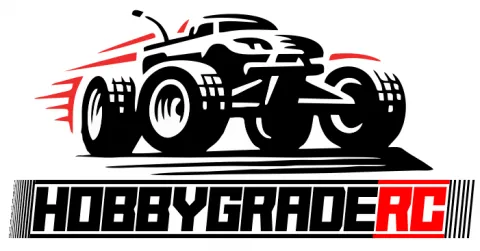
 Welcome to the World of Tamiya RC
Welcome to the World of Tamiya RC Choose the Perfect Tamiya RC Car for Your Needs
Choose the Perfect Tamiya RC Car for Your Needs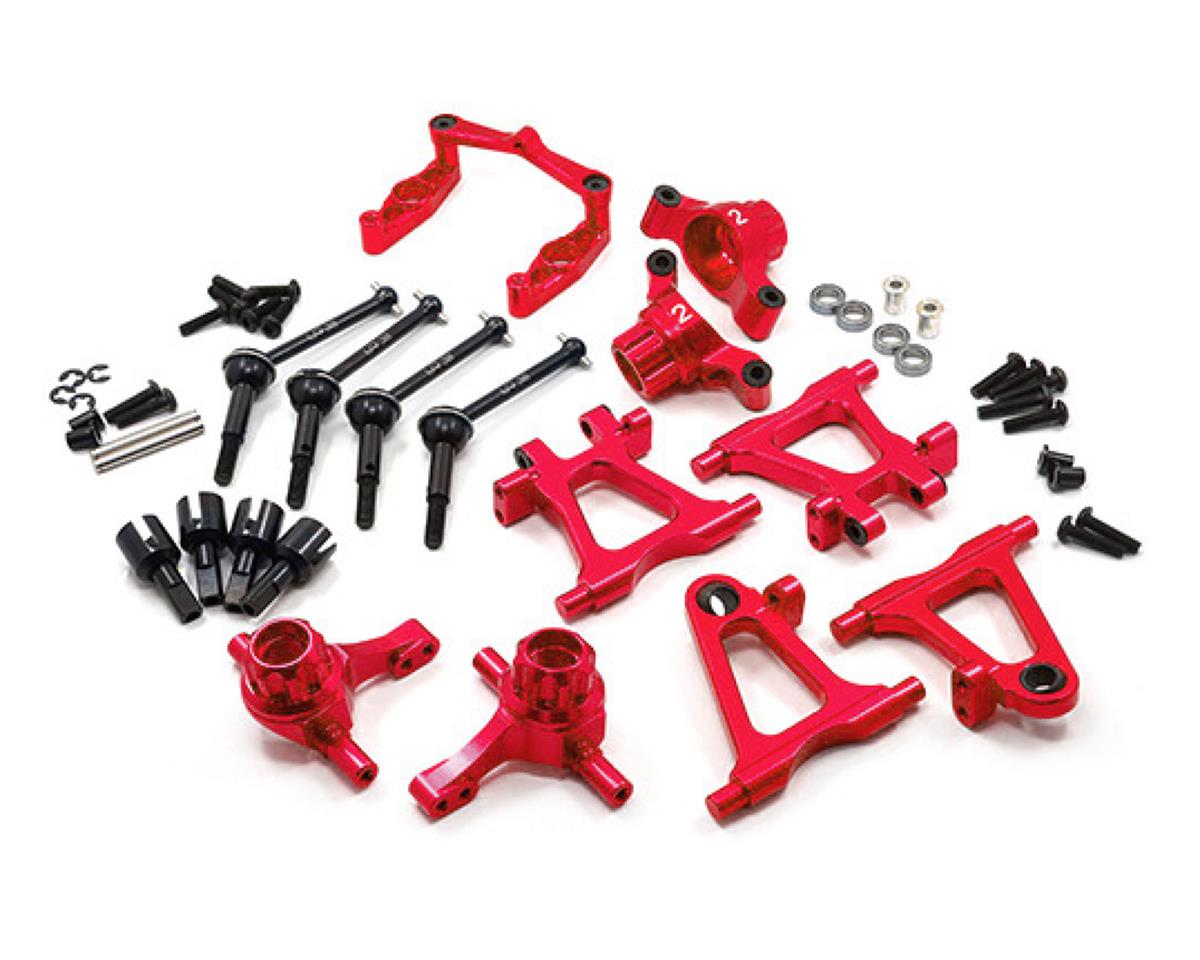 Creating an Efficient Workspace for Building Tamiya RC Kits
Creating an Efficient Workspace for Building Tamiya RC Kits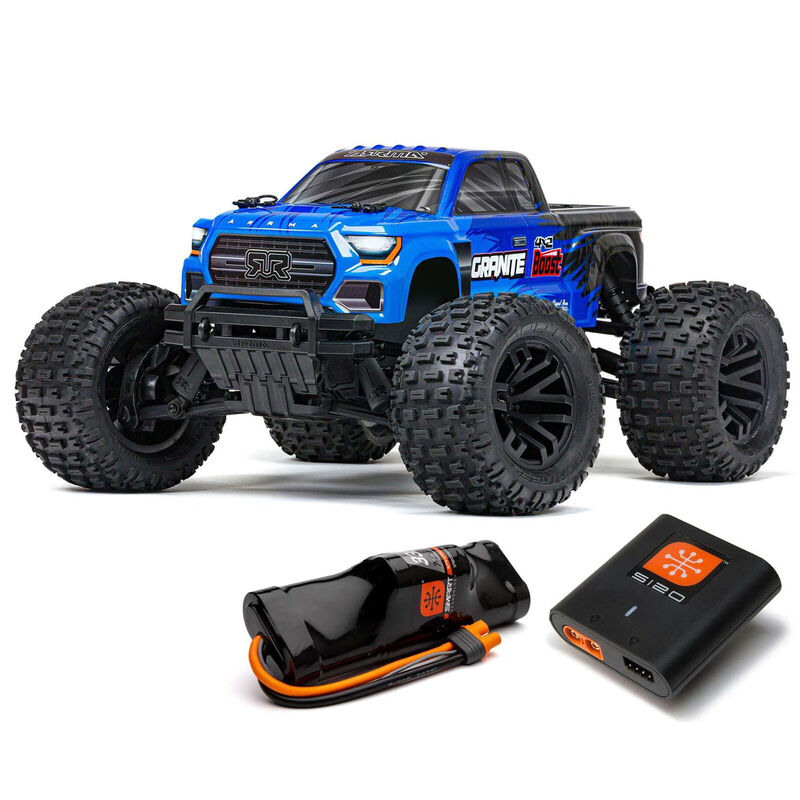 Essential Tools for Building Your Tamiya RC Car
Essential Tools for Building Your Tamiya RC Car Choosing Your First Tamiya Model Kit
Choosing Your First Tamiya Model Kit Quick Tips for Sorting Tamiya RC Kits
Quick Tips for Sorting Tamiya RC Kits Building a Tamiya RC Car or Truck: Tips for Beginners
Building a Tamiya RC Car or Truck: Tips for Beginners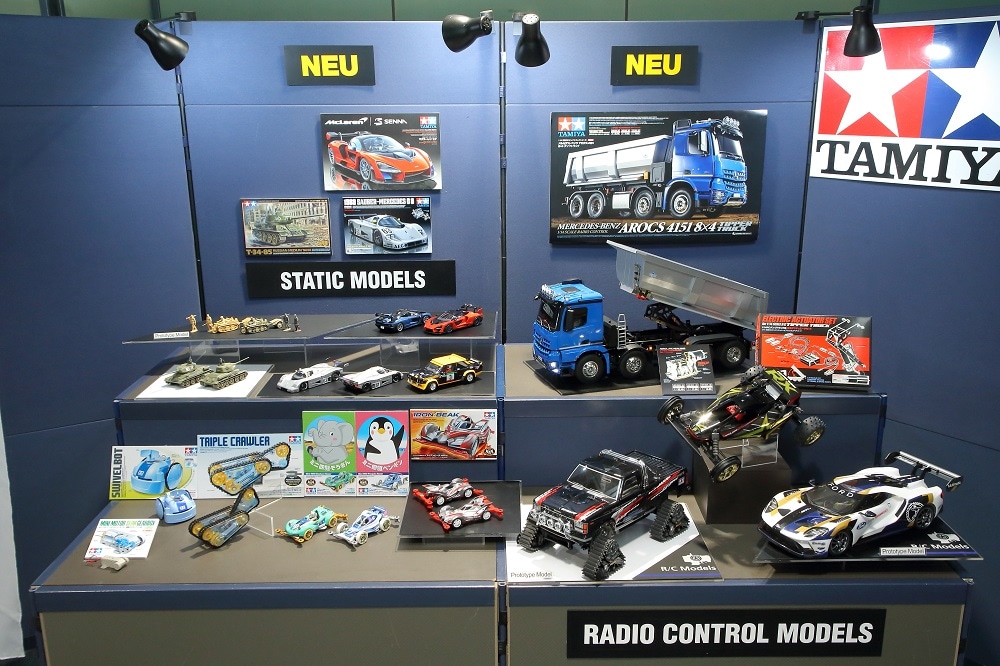 How to Paint and Detail Your Tamiya RC Build
How to Paint and Detail Your Tamiya RC Build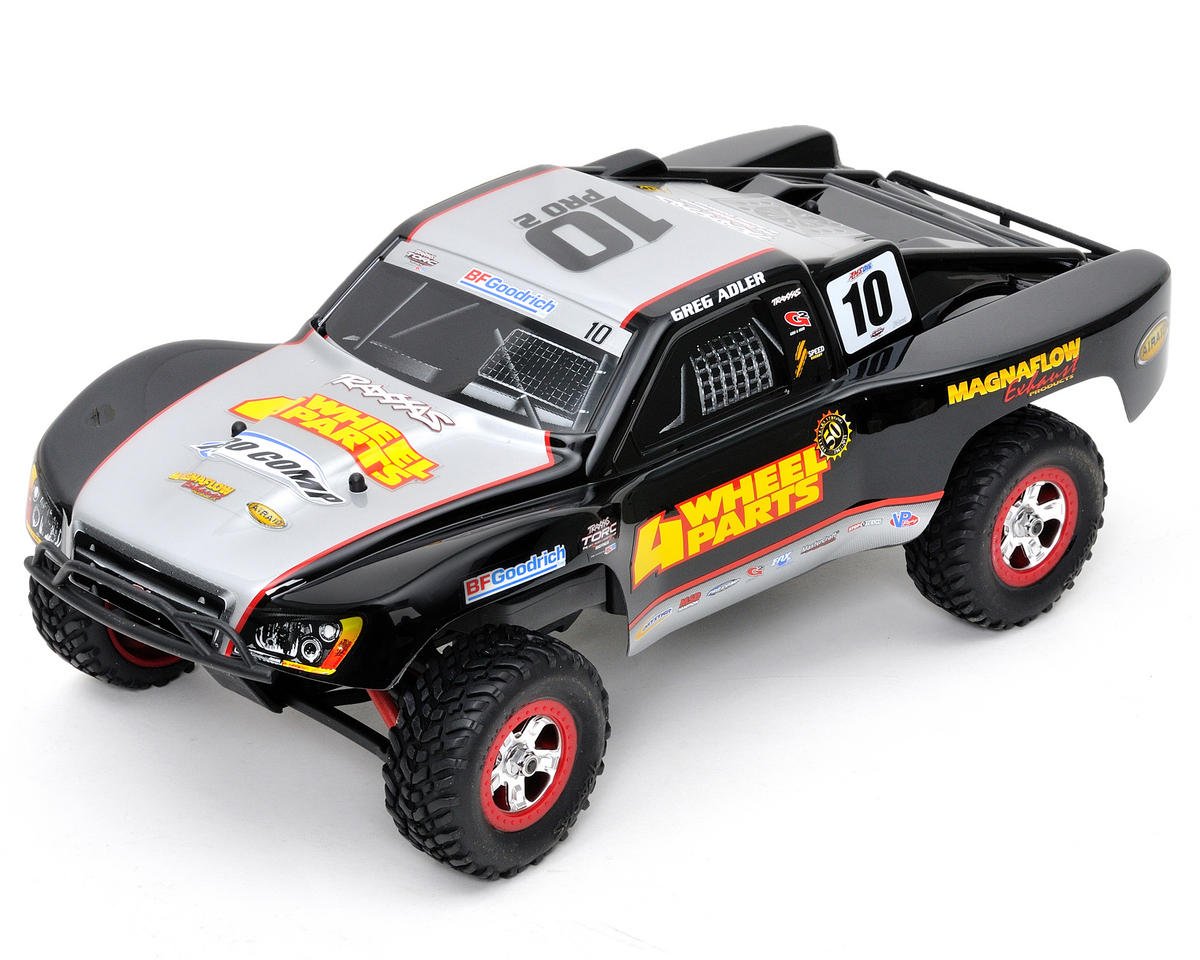 Upgrade Your Stock Tamiya RC with These Performance-Boosting Tips
Upgrade Your Stock Tamiya RC with These Performance-Boosting Tips Maintain and Repair Your Tamiya RC for Maximum Enjoyment
Maintain and Repair Your Tamiya RC for Maximum Enjoyment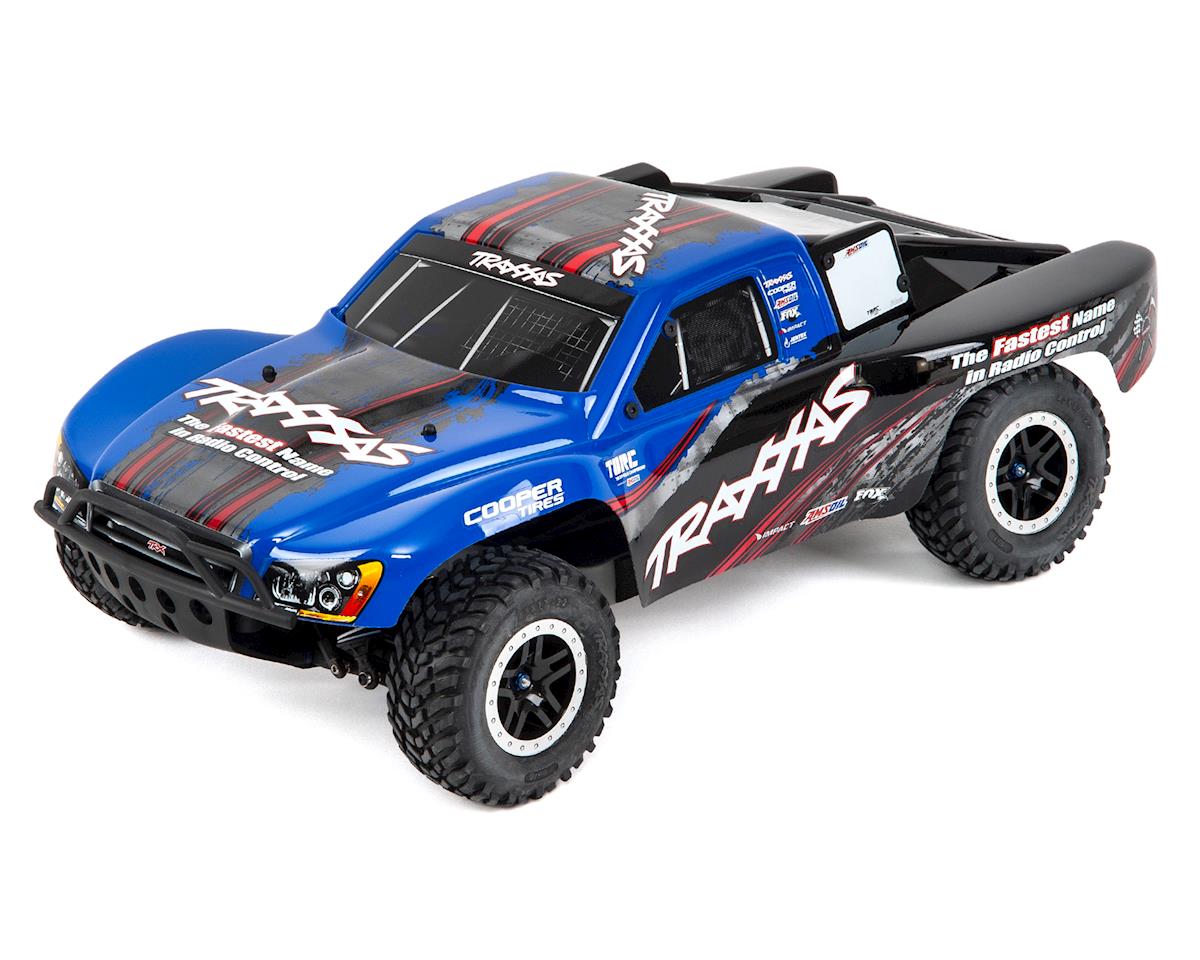 Join the Tamiya RC Community for Maximum Enjoyment
Join the Tamiya RC Community for Maximum Enjoyment Congratulations on Unlocking the Full Potential of Your Tamiya Vehicle!
Congratulations on Unlocking the Full Potential of Your Tamiya Vehicle!